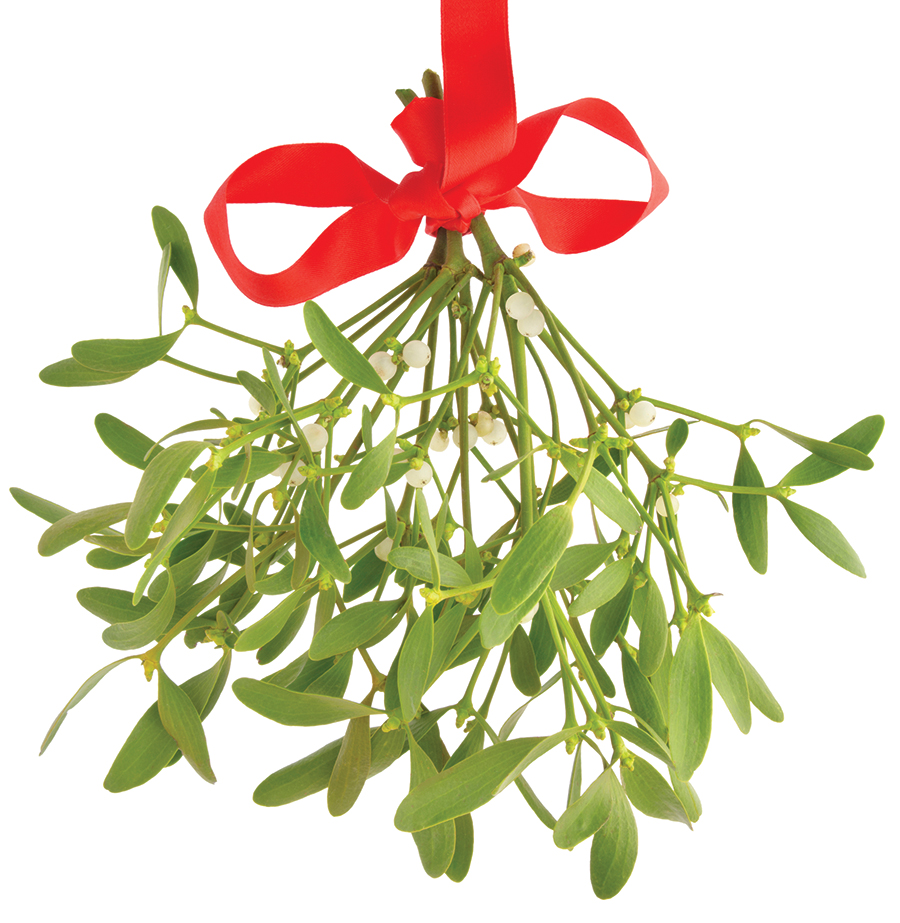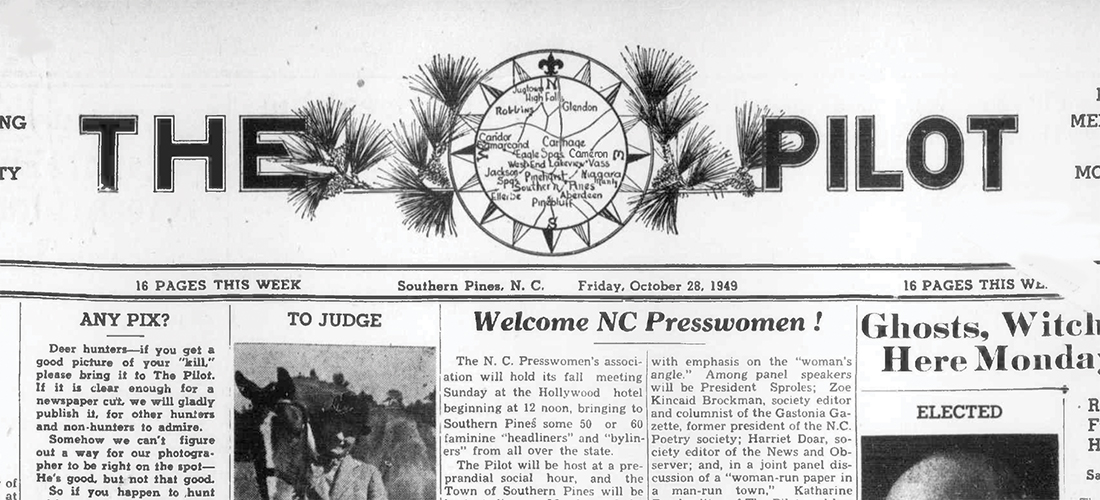There’s an old saying that good things come in small packages. So do amazing acts of kindness
By Jim Moriarty • Photographs by Tim Sayer
It’s the season of our better angels. But warmheartedness isn’t only expressed by that larger-than-usual tip or that unexpected check and, thankfully, it doesn’t appear just once on a calendar. Our communities are populated by the generous of spirit who give without fanfare and often go unnoticed, though never unappreciated. How fortunate are we to live in a land of small kindnesses? There are not enough pages in this magazine during an entire year to show everyone who helps with their hands or their time or their talents. What follows is a tiny slice of that circle, a sliver of grace, shown here to represent the rest. You know who your are, and so do we.

Tom Burke
Tom Burke is a specialist. He specializes in bonding.
Burke and his wife, Trudy, moved to Pinehurst from Boston 24 years ago after touring the South looking for just the right spot to retire. She was a registered nurse, and he was a salesman for a trucking and shipping company. Intending all along to work a while longer, when they got here she took a job at FirstHealth Moore Regional Hospital. “I was looking through The Pilot and saw that Pine Needles Golf Club was looking for semi-retired people who could walk four to five miles a day,” says Tom. “Exercise, that’s what I wanted.” That’s what he got. Then, one day, Trudy came home from the hospital and said they were looking for volunteers to rock babies.
Fresh from the experience of rocking his own grandson, Burke was keen on the idea. “I went over and applied,” he said. “It’s wonderful. It’s really very soothing.” Of course, baby-rocking is but a tiny subset of the huge number of volunteer jobs at the hospital — and a coveted one at that — but no one does it better than Burke, who has logged 993 baby-hours since 1998. “They give me whoever’s cranky,” he says with a smile. “I get there at 2 o’clock. Get my gown on. Wash up and scrub. I sit down and they put my baby in my arms and I rock them for two hours. It’s unbelievable. I would say 85 percent of the babies are asleep within five minutes. Even the ones that have problems. You can feel it, as soon as they put them in your arms. It’s strictly the human bond. We just completely relax.”
Ken Loyd
Ken Loyd learned to play the piano as a boy in Momma Gaddis’ house in Atlanta. “I would sit down and just plunk out melodies, or try to,” says Loyd of the rickety old piano in his grandmother Kate Gaddis’ living room. “My father heard me playing two of his favorite songs, ‘Ramblin’ Wreck from Georgia Tech’ and ‘Dixie.’ I was just playing them with one finger but he thought I had possibilities.” That led to 10 years of lessons. After graduating from UNC-Chapel Hill, Loyd took a job teaching third grade at Farm Life School, a career that lasted 33 years. The piano became a teaching tool. It’s also a gift, one he shares in the lobby of FirstHealth Moore Regional Hospital’s Outpatient Registration.
Loyd began volunteering to play at the hospital shortly after the piano was donated in 2000, before he quit teaching. “I’d leave school as soon as I could because there wasn’t much point playing there after 5 o’clock,” he says. “When I did retire, I started coming in the mornings. This is a nice balance in my life. I volunteer at some nursing homes, too. Do sing-a-longs at two or three places.
“This sort of distracts people from the medical reasons they might be there,” he says. “I think it gives them a little bit of comfort, a little peace of mind. I don’t know what people’s favorite songs are, but after playing for 57 years, you do sort of know the kinds of music that appeal to people.” He’s got a playlist that’s over 300 songs long.
“I probably see more smiles than the doctors do.”

Peggie Caple
Some people help with a hammer and a screwdriver. Peggie Caple wields a deft ballpoint pen. Caple, who still lives in the house she built next door to where her parents lived in West Southern Pines, worked in the Sandhills Community Action Program in Carthage, the Moore County Schools and at Sandhills Community College, where she was the director of financial aid, retiring from the college after 21 years. A hospice volunteer for over a decade, Peggie began working with the Sandhills/Moore Coalition for Human Care six years ago screening and assessing need.
“I love it because that’s helping people who are in need in our community,” she says, sitting at a table in the basement of the Trinity AME Zion Church, another beneficiary of her service. “The applicants come in and I talk with them and see what we can do to help them. We provide food, free clothing and sometimes some financial assistance. But it has to be an emergency, a real need. We want to help them get on their feet. People who have lost jobs or for some reason their life has gone downhill and they just need a helping hand. I enjoy working with an agency that offers that helping hand.”
Christmas is her favorite time of year. “I wish we could have Christmas all the time,” she says. “People seem much nicer. A little nice goes a long way. I welcome that.”

Tom Palmquist
Sometimes stuff just needs to be done, and when it does, Tom Palmquist is your guy. After a 20-year management career in Flint, Michigan, working directly for General Motors and another 10 for subsidiaries of the Chevrolet division, Palmquist and his wife, Carol-Ann, retired to Pinewild following the recommendation of some friends from his native western Pennsylvania. “We moved here shortly after retirement, built a home and moved in May of ’02,” he says. Palmquist began volunteering at Community Presbyterian Church but got hooked on the Boys and Girls Club after just a few visits, and now routinely puts in as many as 300 hours during the course of the year.
“They’re doing a great job with kids,” he says. “They have so much energy. You go in there when the kids are in there; it’s just unbelievable. They’re working so hard to move that energy in a positive direction with all kinds of reinforcement. I just think it’s an excellent program.”
Palmquist reinforces with a paintbrush. “A lot of it comes down to painting,” he says, laughing at his handyman role. “We painted the interior of the old building, for the most part. And I painted for them down at the facility they use in Aberdeen. And repairing things. Ping-Pong tables. They had a sign out at the end of the street between the ballfields on Morganton Road. The hurricane blew it right out of its frame and broke it. So, I’m working on that. I have it at home in my garage, trying to patch it, see if I can save it and put it back where it belongs. Things come loose here and there. Shelves. I don’t know that you can call it carpentry work. I’m not an expert. And I don’t get into anything like electricity or plumbing. A flashlight with three batteries is about my limit.”

Stephen Fore
Food trucks are all the rage these days, but few ever dished up more manna than What’s Fore Lunch? When Hurricane Matthew devastated the interior counties of North Carolina, Stephen Fore, a Southern Pines native, local chef and food truck entrepreneur who got his first Easy Bake Oven when he was 5 years old, hit the road for Lumberton.
Fore got a call from Ron Scott, a local attorney who had been sending supplies to Rock Church of God. “I’m up early. I get the message at 4:30, by 6 a.m. the ball is rolling,” says Fore, who talked to store managers at Fresh Market and Lowes Foods. “Within 2 1/2 days, we started serving. We got there at 10:45 Saturday morning and by 1:30 we had delivered 650 plates. People who didn’t have power. People who were displaced from their homes. They were getting put up six to a room in a motel. So, we did a spaghetti plate dinner with green beans and yeast rolls. Coke and Pepsi donated 600 sodas.”
With the anonymous backing of a local doctor, Fore returned a week later. “We said we’d be serving by 4 o’clock. A mother with about a 6-or 8-year-old daughter and a son walk in at about 3:35. We’re doing cheeseburger, mac and cheese, green beans, yeast rolls, just another big spread. So, this mother comes in a says, ‘Is it time yet?’ Someone says, ‘No, honey, we’ll be ready in about 20 minutes.’ We’re running back there. To get food ready for 800 people in about an hour is tough. I brought some extra chicken, so I ask, ‘Can I make you a sandwich or something?’ The mother looks at me and says, ‘That would be awesome. My daughter hasn’t eaten today.’ It was 3:30 in the afternoon. I make a chicken sandwich. The little girl comes back about five minutes later, says that was the best chicken she’s ever had and she wants to know if she could have another one. I said, ‘Sweetheart, you can have as many as you want.’”
It’s a long way from over. Fore is trying to raise money by Dec.15 so the kids affected by the flood in Lumberton can have something resembling a Christmas. “They have nothing. Literally nothing.”

James Johnson
James Johnson grew up in the Bronx, New York, but in March 1971, he was in the 196th Infantry, a member of the Americal Division, fighting to stay alive at Chu Lai, a base in Central Vietnam. “We tried to get them to let us go back in the field but they wouldn’t let us go,” says Johnson, a Purple Heart recipient. “Three-thirty in the morning we got overrun but we held the hill until we could get out.”
A disabled veteran, Johnson volunteers an hour a day, making food pickups in his white Toyota truck for the Boys and Girls Club, delivering kindness in cardboard boxes. “I go to Fresh Market five days a week, pick up at 10 in the morning and I’m back by 11 o’clock. I do Outback and Bonefish on Tuesday. Every other week I do Olive Garden,” he says.
It’s all part of the plan. “Let them see that there’s more important things in life, there’s a lot of skills and jobs out there you can get,” he says. “You don’t have to do drugs. You don’t have to be around bad people. Go somewhere where you can learn something.
“Help somebody else that’s in need,” he says. “It’s like in the war, the Vietnamese people needed food. When you had extra canned goods, you would give it to them. You see how the little kids run up to you and they speak to you. You’ve got something nice, you just turn it loose. You’re not looking for anything in return. Like the Lone Ranger would do. ‘Hi-Ho, Silver. Away!’ You came to do a good deed and you took off. And that’s the way it is with me. I just come to do something good and go away. I’m not looking for anything in return.”

Richard and Inge Hester
Having moved from Jeffersonville, in southern Indiana, seven years ago to get closer to the grandkids in Carthage, Richard and Inge Hester fell in love with a little red building with a long handicap ramp. It’s the one in back of the Sandhills/Moore Coalition for Human Care, where they’ve been ringing up bargain priced treasures and necessities — not necessarily in that order — two days a week for the past six years.
“We fell in love with the Barn, if you can believe that,” says Inge.
“I do the lifting and carrying,” says Richard.
“I’m the finance manger,” says Inge. “He doesn’t really care about the cash register.”
Not all the castoffs that come through the Pennsylvania Avenue door are in, well, pristine condition. Richard pulls a vacuum cleaner out of the corner to show it off. “I took that home,” he says of his private workshop. “Cleaned it completely. Put a new bag in it. Test it. Make sure it works. I sold a Dyson this morning.”
“Twenty-five dollars,” says Inge. “You can’t beat that.”
Richard honed his skills working for Caterpillar Inc. for 33 years. “I like to tinker,” he says. “There’s a testing area back there where I test VCRs, stuff like that. Small appliances, I take home and fool with. I can’t pass a tool up. I’ve got wood lathes. An old chair comes in, take it home, fix it up. Bring it back.”
Anything that hangs around too long goes on the ‘free’ table. “If we have to haul it to the dump, then we have to pay for it,” says Richard. Money is supposed to come in, not go out.
The niche they fill is need. “There’s a lot of satisfaction in it,” says Inge. “It’s a good cause, a really good cause.” PS




















